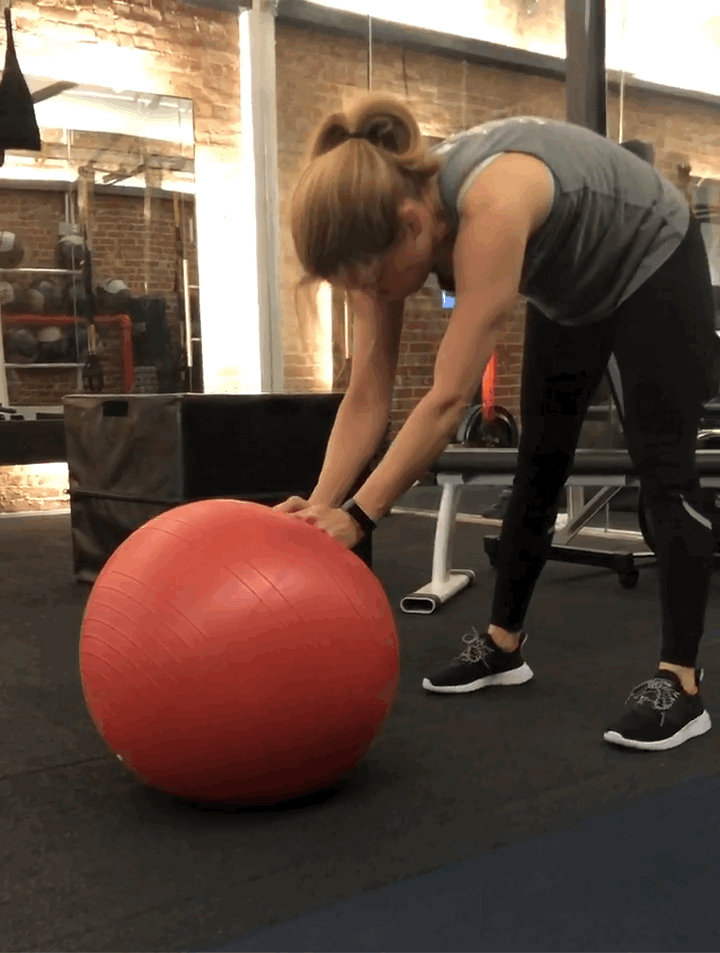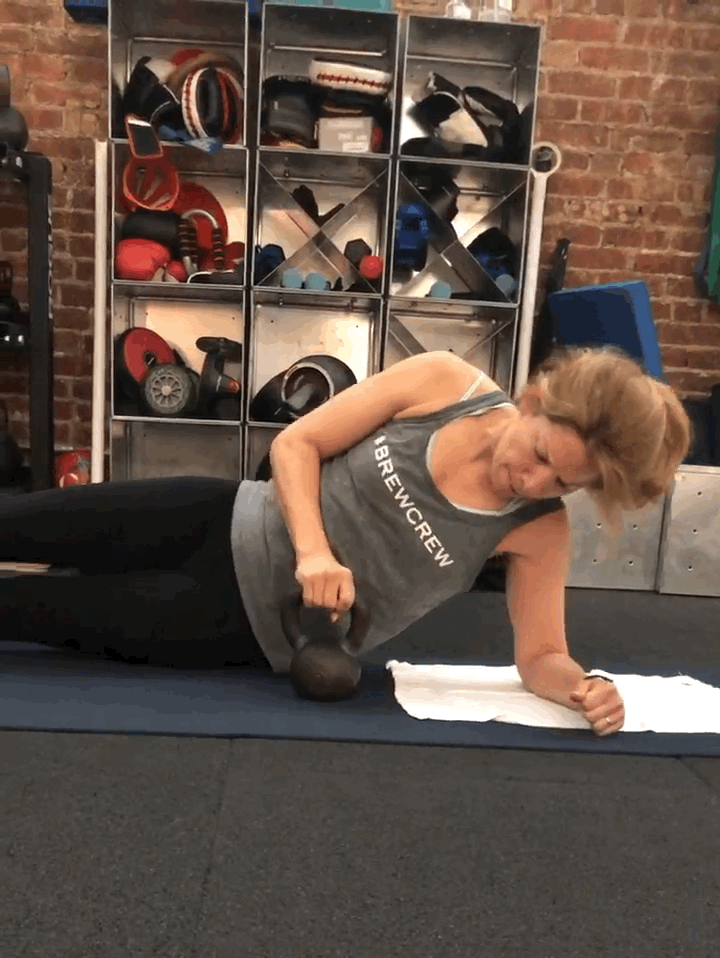Wine Cellar Work
I like calling the core/abdominals the “wine cellar.”
I incorporate movements targeting the wine cellar in all my classes and personal training sessions. If your core is not strong, you’ll be less stable and won’t be able to perform most activities at your fullest potential. Also, if your core area is weak, you’re more likely to suffer from back pain and have poor posture. A few minutes of core work a day can reduce and prevent these issues.
Here are a few exercises from a session with my client, Noelle, this morning. When trying these on your own, aim for 2-3 sets of 15-20 reps.
Medicine Ball Balance & Pass
This exercise keeps you focused and engaged throughout the set. Here, Noelle tosses me the medicine ball as I place a fresh ball on her shins. By placing the ball on her shins, it forces her to keep to her legs at a 90 degree angle (tabletop position). I often notice that the first form mistake in performing core exercises is leg positioning. Legs often fall lower or flail a bit. Here, you have to keep the ball from falling, so your legs maintain a position that will support and balance it. In addition, by bringing the knees in to grab the medicine ball while simultaneously tossing the ball, she is working everything from upper to lower abdominal muscles.
If you don’t have a partner or a medicine, no problem! You can easily perform this exercise on your own with any object such as a dumbbell, can of soup, pillow, book, etc. Just take the object and instead of tossing it, place it on your legs in the tabletop position. Lower yourself down slowly. Come back in a controlled manner like Noelle, but this time, reach and take the object being balanced on your legs and then lower down, then come up and place it back on the shins and lower down; repeat.
Roll-Out to Plank
Using a Swiss Ball, Noelle is rolling out to a plank position, pausing, and rolling back in a controlled manner back to the starting position. You want to roll out without letting your back sag down.
Beginning in a standing position is an advanced version of this move (shown here). To start, you may begin on your knees and roll out to the plank.
In addition, play with with this movement to make it your own. Once you are in the plank, try holding that position for 15-30 seconds. Or when you are in the plank, balance on one leg for 8 seconds, and then switch legs.
Side V-Ups with a Swiss Ball
Once again, we are using a prop (the Swiss Ball) to maintain proper form throughout this exercise. Side V-Ups target your obliques big time and you’ll begin feeling these just a few reps into the set. Some pointers:
With the top hand behind your head and elbow up, aim for that elbow to touch the knee of the top leg on every rep. That will allow for the largest range motion on that side crunch.
The bottom arm should be on the floor, perpendicular to your body or slightly forward and down at a angle. This position will help you maintain your balance.
Keep your legs as straight as possible.
One side may feel more difficult than the other. This is normal and exercises like this aid in assessing any imbalances within the body.
Side Plank Hip Raises with Kettlebell
The final move also targets the obliques, this time using a kettlebell to both challenge you and work your lats and deltoids. Some notes:
This move is challenging without the kettlebell, too. You can always work on perfecting the movement without any added weight.
If you prefer not to lift the kettlebell, you can keep your upper arm raised, stacking it above your shoulder and holding on to the kettlebell. Try and turn your gaze to the kettlebell and maintain that head position throughout the set.
You may stack or stagger or feet, whichever allows you to balance better.
Give these a try and drop a comment below to let me know how it goes.




